Birding and wildlife photography, as spectator sports, are usually not considered very hazardous activities. Oh, I’ve stepped on yellow jacket tunnels, bumped my head against hornet nests, stood on fire ant hills, suffered itchy poison ivy rash and chigger bites, tripped over old barbed wire fences and battled deer flies and mosquitoes, but… I’m getting ahead of myself, so let’s start at the beginning.
Back in Illinois, illness had curtailed my outdoors activities and caused me to miss the height of warbler migration. I did get out one morning for a brief walk in Jones Meadow Park near our home.
A Warbling Vireo was in full song…
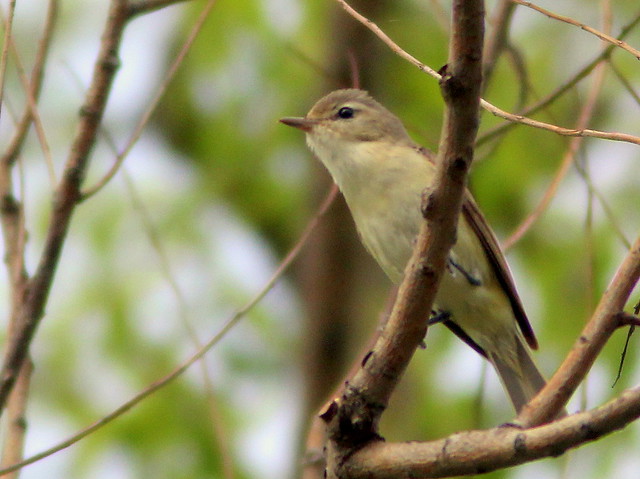
…a tiny House Wren posed nicely…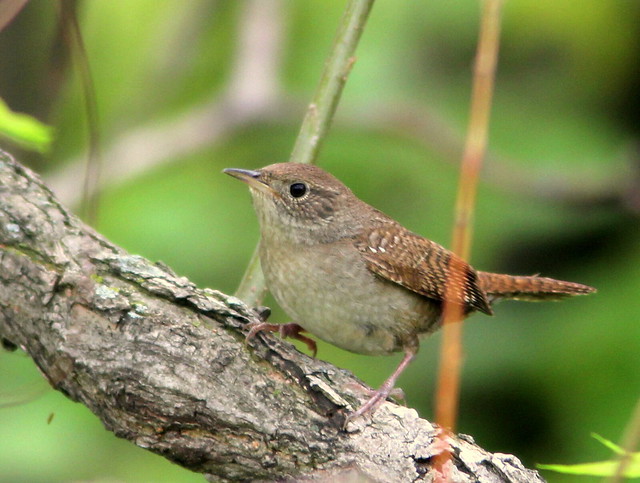
…and a brilliant male Baltimore Oriole peered down from atop a Cottonwood:
Black birds make challenging subjects because the camera receives conflicting signals about exposure, but this side-lit Red-winged Blackbird stood out nicely against a background of over-exposed and out-of-focus cattails:
The camera also treated his somber mate rather nicely:
Driving back to the condo, I noticed that a Horned Lark was singing on a pile of rocks in the vacant lot adjacent to our building. The next morning, our last full day in Illinois, I drove to a vantage point that was only about 20 feet from that spot. The sun was bright and already rather high. I had attached my Better Beamer Flash X-Tender to my flash unit, thinking that I might need some fill flash because of the harsh shadows. As I approached the rock pile, a Horned Lark flew off. I waited a while, hoping it would return. Meanwhile, a Spotted Sandpiper was singing in the distance. It moved from one pile of gravel to the next. Suddenly it was right in front of me.
The Spotted Sandpiper gave me a nice side view, in perfect light:
It flew to another rock pile, where the front door of our condo, out of focus in the distance, provided a halo effect for its image (no need for Photoshop):
A Horned Lark then appeared on the road some distance away, in harsh sunlight: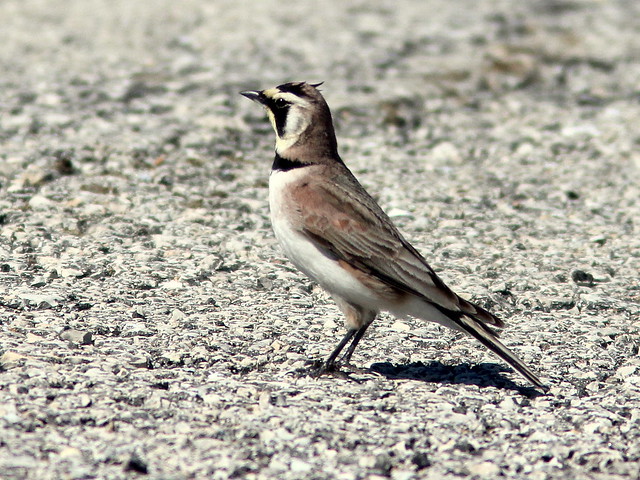
Finally, an Eastern Meadowlark closed the show by singing from a post on the other side of the road. There was no need for fill flash, as back-lighting actually enhanced its color and texture: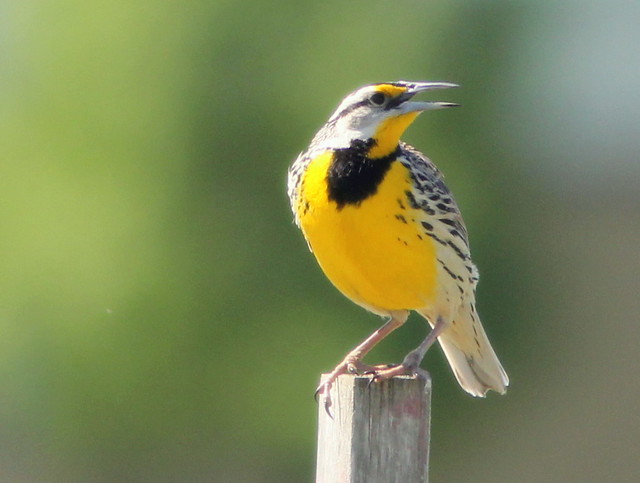
Oh– and while I was photographing the sandpiper I almost had a serious accident. My phone rang with a call from our second-oldest grandson. He wanted to tell me about his baseball game and how he was injured when a hitter deliberately ran into him after being forced out at first base. I placed the camera on the passenger seat, and proceeded with our conversation. Suddenly I smelled smoke– like burning rubber. I looked around outside, thinking someone was burning tires. Then I realized that the smoke was coming from inside the car! The full sun was shining on the Fresnel lens of my Better Beamer, and the focal point of the lens concentrated the beam on the rubber pad on the camera strap. Luckily, I moved the unit into the shade before flames erupted.
My camera gear gives me the right compromise between lens size and weight (about 6 pounds), as I can easily carry it into the field and generally use it hand-held, without need for a tripod (except for videos): Canon EOS 60D 18 MP Digital SLR Camera with Canon EF 300mm f/4L IS USM Telephoto Lens with Canon EF 1.4X II Extender (420 mm f/5.6 lens system), and Canon Speedlite 580 EX II flash unit.
The offending Better Beamer Flash X-Tender is shown attached to the flash unit:
For more information about the dangers of Fresnel lenses, visit this link.
Fresnel lenses can be dangerous!
You should always treat a Fresnel lens with respect - as if it were an open flame!
If you consider that a small magnifying glass and direct sunlight can burn paper, it is not surprising that even a rather small Fresnel lens (20×28cm) can concentrate enough sunlight to instantly incinerate paper, burn wood and even vitrify some types of sand! When experimenting with a Fresnel lens, always treat it as if it were an open flame - and children should not play with it unless they are supervised! Even the briefest exposure of skin at the focal point of a Fresnel lens exposed to full sunlight can instantly cause severe burns!
If you store a Fresnel lens, you should always do so in such a way that it can never be exposed to sunlight! If, for example, you left a Fresnel lens in a location where, at some time of day, it was exposed to the sun and there was something on the other side of the lens at even approximately the focal length of that lens, it could be burned when the sun angle was appropriate.
If you mount a Fresnel lens in a frame, make sure that it is stored such that it can never be exposed to sunlight. If you are transporting such a lens, always carry it in a covered box or drape it with cloth to prevent it from being exposed to the full and concentrated energy of the sun!
In other words, an improperly-treated Fresnel lens can not only burn you, but it can case severe property damage!













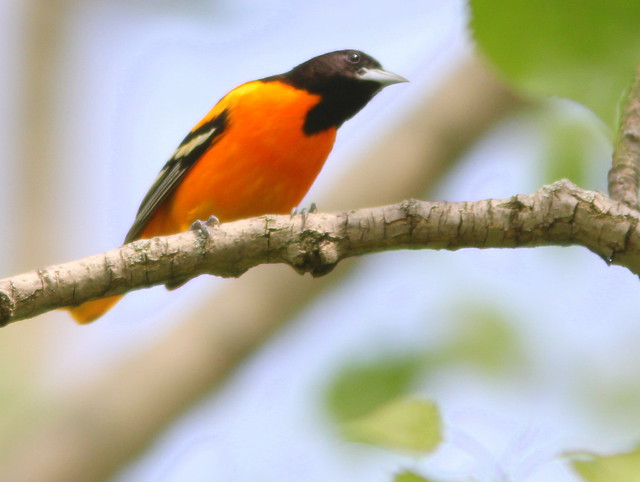
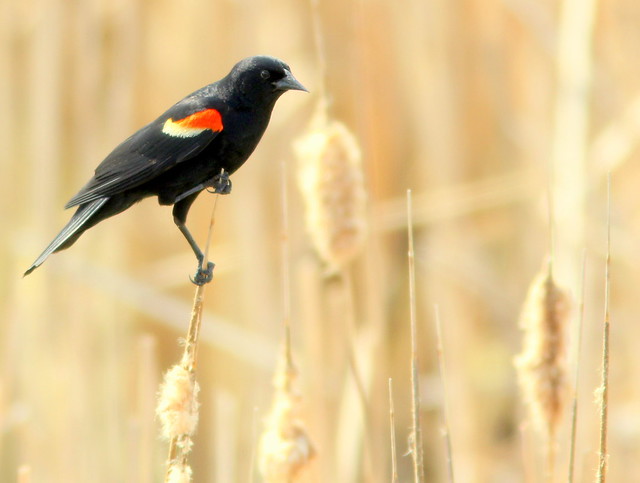

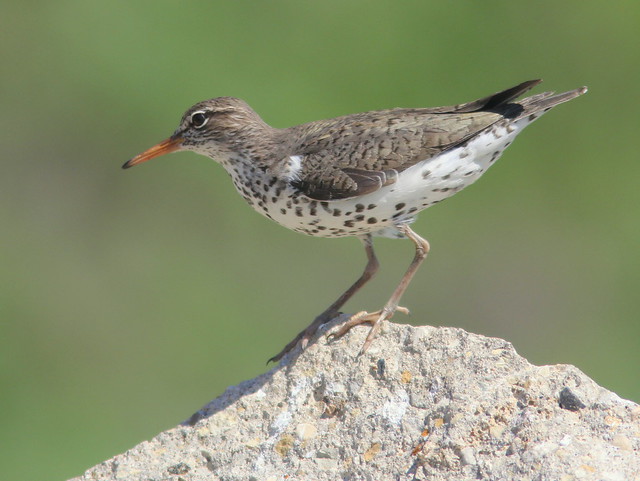
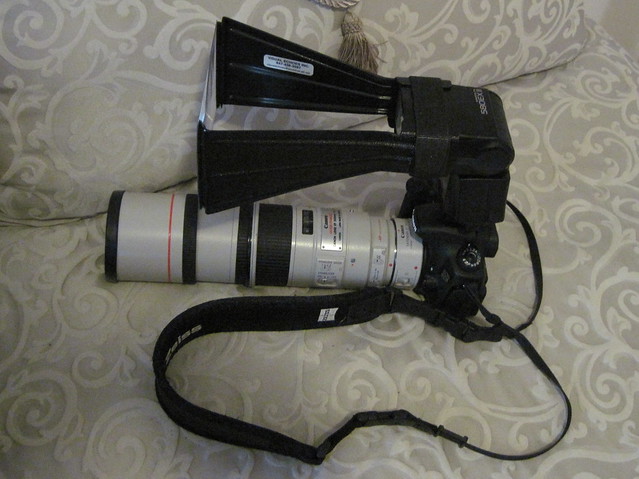
June 15th, 2011 at 9:00 am It’s a good thing you were in the car to move the lens. Hate to think what would have happened if you were not around to notice the smoke. Wonderful captures!
June 15th, 2011 at 10:21 am Lovely captures of the Horned Lark and House Wren Ken. A good job you were inside the car at the time, and not outside, with the camera on the seat. Could have been a nasty accident.
June 15th, 2011 at 1:24 pm Beautiful captures of your lovely wildlife.
June 15th, 2011 at 1:44 pm Great captures!! Boom & Gary of the Vermilon River, Canada.
June 15th, 2011 at 8:56 pm Wonderful shots, I especially like the male blackbird among the cattails! And oh no about your better beamer! I’ve heard warnings that that can happen, but never before heard a story first hand.
June 16th, 2011 at 5:48 am Beautiful shots!I particularly like the Eastern Meadowlark - have never seen one. Looks like you got the right gear too, and now you know what to watch out for!
June 16th, 2011 at 6:25 pm Wonderful shots of so many beautiful birds! I’m really jealous of your Red-winged Blackbird capture!
June 21st, 2011 at 2:51 pm Wonderful post + stunning images + beautiful birds + great work = Perfect!